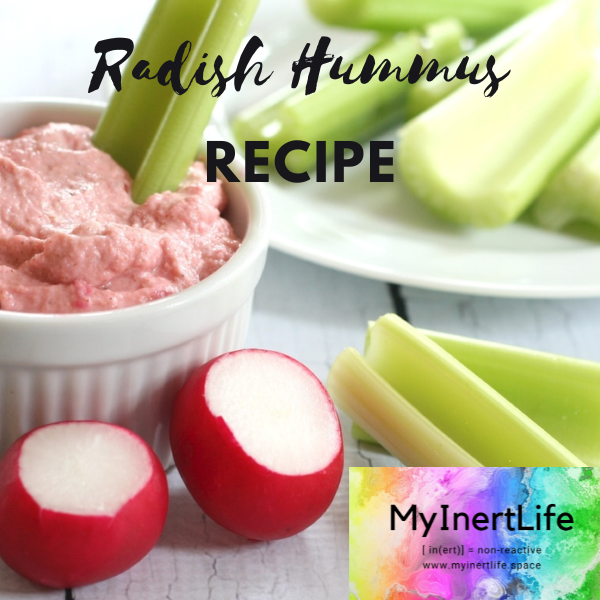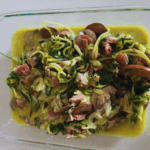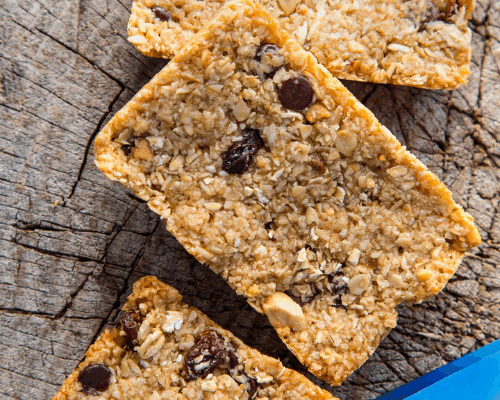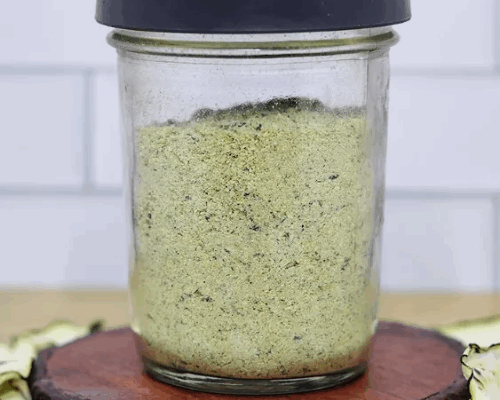This radish hummus recipe satisfies your craving for a savory dip for veggies or crackers. It uses radishes instead of legumes for the base, with olive oil, salt, and garlic to round out the flavor profile.

As an Amazon Associate, I earn from qualifying purchases.
Table of Contents
Ingredient notes
I like to use this sea salt because it is free of microplastics. You can use either sesame seed butter (tahini) or sunflower butter in this recipe.
Radishes are an easy vegetable to grow in the garden, and can be sown in succession for multiple harvests each year!
What is MCAS?
Mast Cell Activation Syndrome (MCAS) is a chronic condition that affects all organ systems. MCAS is serious and disabling and people with MCAS experience often significant and debilitating symptoms daily, including anaphylaxis, which can be fatal.
MCAS is often found in combination with other chronic conditions such as Ehlers-Danlos Syndrome (EDS) and Postural Orthostatic Tachycardia Syndrome (POTS).
Frequently healthcare providers do not know about MCAS, and the tests for MCAS are problematic because they are not uniformly reliable. MCAS can be difficult to manage. Treatments include blocking mast cell mediators with anti-histamines and mast cell stabilizers, as well as avoiding triggers.
Check out this post on how to manage MCAS.
Why this recipe?
This recipe is low in carbs, higher in fat, protein, and fiber, while still being lower in histamine and histamine-releasing foods, lower in oxalates, and free of nightshades, grains, and gluten. Eating a diet lower in carbs and inflammatory foods can help to control histamine intolerance. To learn more about the lower histamine Keto diet click here!
The bucket theory
The bucket theory offers a helpful analogy for understanding symptom reactions with MCAS.
Think of your body as an empty bucket that you want to keep from overflowing. Different foods and activities fill your histamine bucket at different speeds but they combine to form the total level of histamine in your body (how full your bucket is). A fuller bucket means you have more histamine symptoms. When you manage triggers, reduce exposure to known triggers, and take medications and supplements to reduce histamine, you can manage the level of your bucket.
Know your typical symptom progression
Knowing your symptom progression in a symptom flare is the key to developing your own rescue plan. In this post, I discuss how to determine your own symptom progression. Once you know what typically happens in your symptom progression you can design a rescue plan to address those symptoms.
Get my free ebook, symptom log, and meal plan!
Want a tool to easily keep track of your symptoms? Sign up for my newsletter and you will receive my free 50-page ebook of lower-histamine, grain-free, sugar-free, Keto recipes, my free symptom log, and a free two-week meal plan!
Here’s the radish hummus recipe!
Radish Hummus Recipe
Ingredients
- 1 cup radishes cleaned and sliced
- 2 tbsp tahini (sesame butter) or sunflower butter
- ½ tbsp fresh lemon juice
- 3 cloves garlic minced
- ½ tsp sea salt
- ¼ cup olive oil
Instructions
- Preheat the oven to 400 degrees Fahrenheit.
- Arrange radishes on a baking tray. Drizzle with a little olive oil and roast for 20 minutes until tender.
- Add the roasted radishes, tahini, lemon juice garlic, and oil to the bowl of a food processor. Season to taste and blend to combine until thick and creamy.
- Taste and adjust the seasoning if desired, or add more oil for a thinner texture. Optionally you can drizzle with extra oil. Serve with crudites or crackers.
Sign up for the SSP!
The Safe and Sound Protocol (SSP) is a listening therapy based on Polyvagal Theory that helps heal nervous system regulation. Many people with MCAS have nervous system dysregulation stemming from infections, toxic exposures, concussions, and trauma. The SSP is an easy-to-use app where you listen to specially filtered music for 30 minutes each day for a 5-hour cycle. Studies show the SSP has a profound effect on mental health and chronic conditions
You can sign up for the SSP here!
Order my book!
Rocks and Roots chronicles my journey solo backpacking the Superior Hiking Trail and overcoming nervous system dysregulation, gut dysbiosis, and Mast Cell Activation Syndrome symptoms to hike 328 miles successfully.
Check out this powerful frequency device
Healy is an individualized microcurrent device I use to reduce inflammation. Check out this post for more about Healy.
Sign up for a session!
I provide one-on-one in-person and remote chronic illness and caregiver coaching and Sacred Self-Healing Sessions based on the Sacred Self-Healing Method, a proven novel co-creative healing modality detailed in my Books.
Click here for more information.
What do you think?
I’d love to have your reply below!
Disclaimer
The preceding material does not constitute medical advice. This information is for information purposes only and is not intended to be a substitute for professional medical advice, diagnosis, cure or treatment. Always seek advice from your medical doctor.



